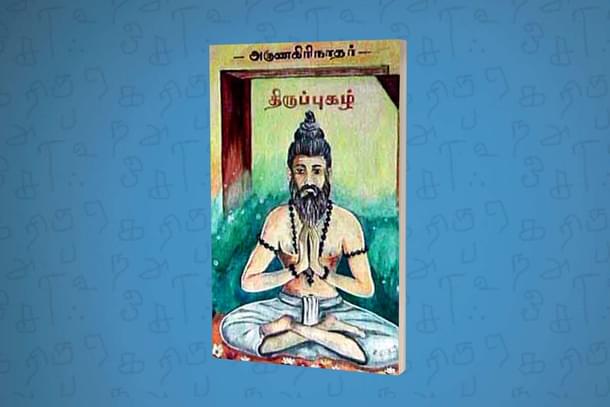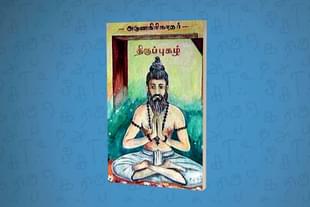Culture
Skanda Shashti: How Murugan, The Eternal Child, And His Devotee Arungirinathar Can Inspire An Innovative Therapy To Fight Depression Of Old Age
Aravindan Neelakandan
Nov 09, 2021, 05:42 PM | Updated 05:42 PM IST
Save & read from anywhere!
Bookmark stories for easy access on any device or the Swarajya app.


Many would have noticed that the isolation which people had to endure during the pandemic had harsh effects, especially on the older people. In a way, old age itself is a kind of isolation. Add to that the sense of sudden physical isolation from the world they knew and you have a setting that can exaggerate the misery of old age. The results have been painfully tangible for many thousands of families.
How does one cope with it?
Arunagirinathar, a saint who lived in the 14th century southern India, could have a solution that is at once devotionally spiritual and melodiously scientific.
Arunagirinathar knew the charms of a materialist consumerist life, its effervescence and its after effects. Having gone through near-suicidal death experience through the degrading diseases he brought upon himself, he knew what it meant to meet death and come back.
The traditional account of his life which gets corroborated by certain references in his songs assures one that even in the last moments there is hope if the heart repents to the Divine – in this case, Murugan.
A significant number of his songs speak of the alienation and harshness of the old age and the inevitability of death. But he does not speak just about the unpleasant aspects of the old age, he provides solutions which, if properly investigated or utilized, can prove therapeutic to alienation and depression. The collection of the hymns of Arunagirinathar is called Thirupukazh – the auspicious praising of the Divine – the name, tradition informs us, was chosen by Ganesha Himself, the elder brother of Murugan.
The poem taken here is Thirupukazh sung for Subramanya of Thiruchendur – the place where Murugan killed the Asura Sura Padman.
How does the old age come?
It comes with each and every part of our body slowly reducing their works. They slowly deteriorate. More than us, the others see it, particularly the opposite gender. This brings to the person concerned a deep sense of shame. So, the greying hair, the shaking teeth and the voice, often mixed with incessant coughs, the failing hearing and collapsing vision and the need for a cane to walk – thus sets in the old age.
We continue to be in denial. But we are taken to the next stage as well. We are in grip of the disease. We suffer. The doctors attend to us. The children whom we brought into this world and whom we lovingly nurtured are now more worried about the properties they can get and debts we leave for them to settle. Then as the moment approaches, as the wife cries and life dims, the poet asks Murugan to come.
Then suddenly in the poem there is a change of scenario. There is a beautiful child and its mother asks the child to come to her. Not once not twice but ten times she calls the child. Why ten times? Because in Hindu Tamil literature the childhood is divided into ten stages. But here, the stages are not seen as isolated events of the cognitive development of the child but taken as a combined whole, where the responses and joy each stage evokes in the parents is tied together.
So, the child is called by his mother ten times to come and eat. Every parent who has gone through this stage knows this to be one of the happiest phases of one’s life. It gives immense pleasure. One always looks back to the immeasurable joy of ‘those days’ with tearful nostalgia. Often this is also accompanied by a painful reminder of the presence – the child has grown into an adult. But not this child. This child is the Divine child. The mother is Kausalya and the child is none other than Sri Rama. And Murugan is the son-in-law of this Rama who is none other than Maha Vishnu.
Apart from the basic substratum of bhakti, what the poet does is to contrast the alienated old age with the vision of sweetness – the best sweetness any person as a parent exuded in his or her life. Here, Arunagirinathar taps into nostalgia. Only, here you can always call in the inner chambers of your heart this Divine Child, this eternal child and feed Him who feeds all the universes. This is also a therapy where nostalgia becomes a spring board for the contemplation of the Divine.
This is essentially and entirely bhakti and this is also therapy.
In September 2021, in the Journal of Social Psychological and Personality Science (Sage Publications), a study was published titled ‘The Restorative Power of Nostalgia: Thwarting Loneliness by Raising Happiness During the COVID-19 Pandemic.’ The authors, through a study that was conducted in three nations across the globe, (China, the USA and UK) in 3721 subjects, discovered that the memories of the isolated people often resisted falling into depression by accessing nostalgic memories which in turn increased happiness. The researchers write in their end discussion this:
Loneliness, a widespread psychological and societal problem is threatening to become an international health crisis during the pandemic. Loneliness appears to have triggered a wave of nostalgia, from a surge in popularity of old-fashioned board games to social media trends like #MeAt20 and rebroadcasting of classic sporting events. We theorized that nostalgia constitutes an antidote to loneliness. Nostalgia counters the negative aftermaths of loneliness (unhappiness), establishing a homeostatic correction.
The re-telecast of popular old serials or movie songs do help as the study suggests. But what is even more organic to the being is the nostalgia of the highest joy one experienced in life. For most who are parents that is the memory of the time spent with their toddlers. Delving into those memories can be a great booster of happiness and counter depression- and alienation-related issues.
However, human relations are complicated. Often relations between parents and children may sour as the children become adults.
Arunagirinathar has a solution here too.
What Arunagirinathar does is that he takes that most beautiful of the nostalgic memories and maps them to an eternal principle, to the all-encompassing Divine. So, it removes or at least reduces any possibility of a bitter memory coming up. And all this he does with soulful music. Studies have shown that most neural degenerative diseases mostly do not damage what the scientists consider as the ‘music’ region of the brain.
Clearly, an Arunagirinathar music-meditational therapy can be a useful, meaningful and beautiful tool for healing and fighting depression. There may be many such insightful treasures waiting to be harvested and harnessed in the Bhakti literature of our heritage.
So this Skanda-Shashti, let us use the wisdom of Arunagirinathar to vanquish the miseries and increase happiness in our homes and society.
-Video link to the Thirupukazh: here
-Word-by-word meaning of the hymn can be got here: scroll down for English translation.
-Journal reference to the research paper is here
Aravindan is a contributing editor at Swarajya.




